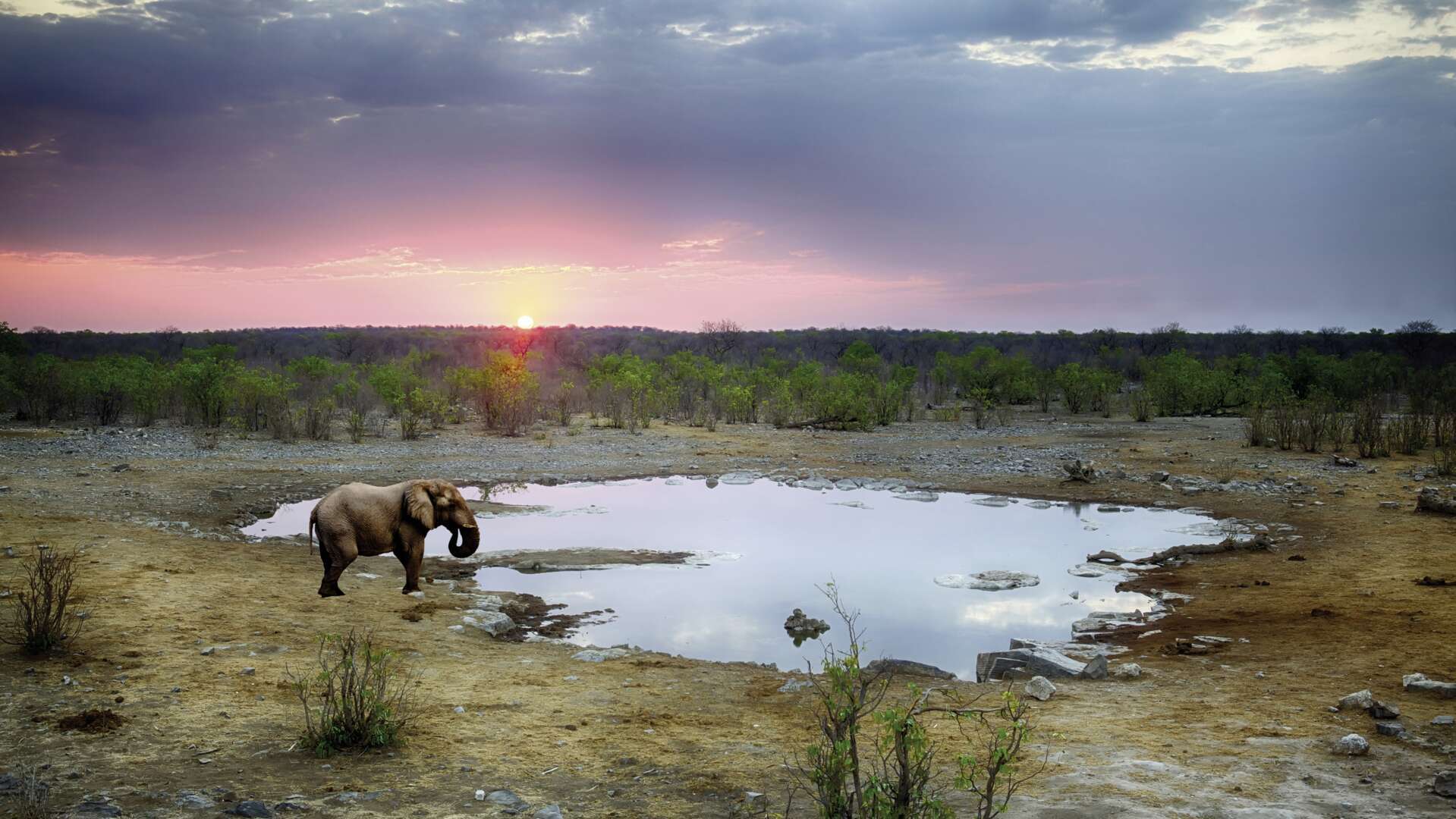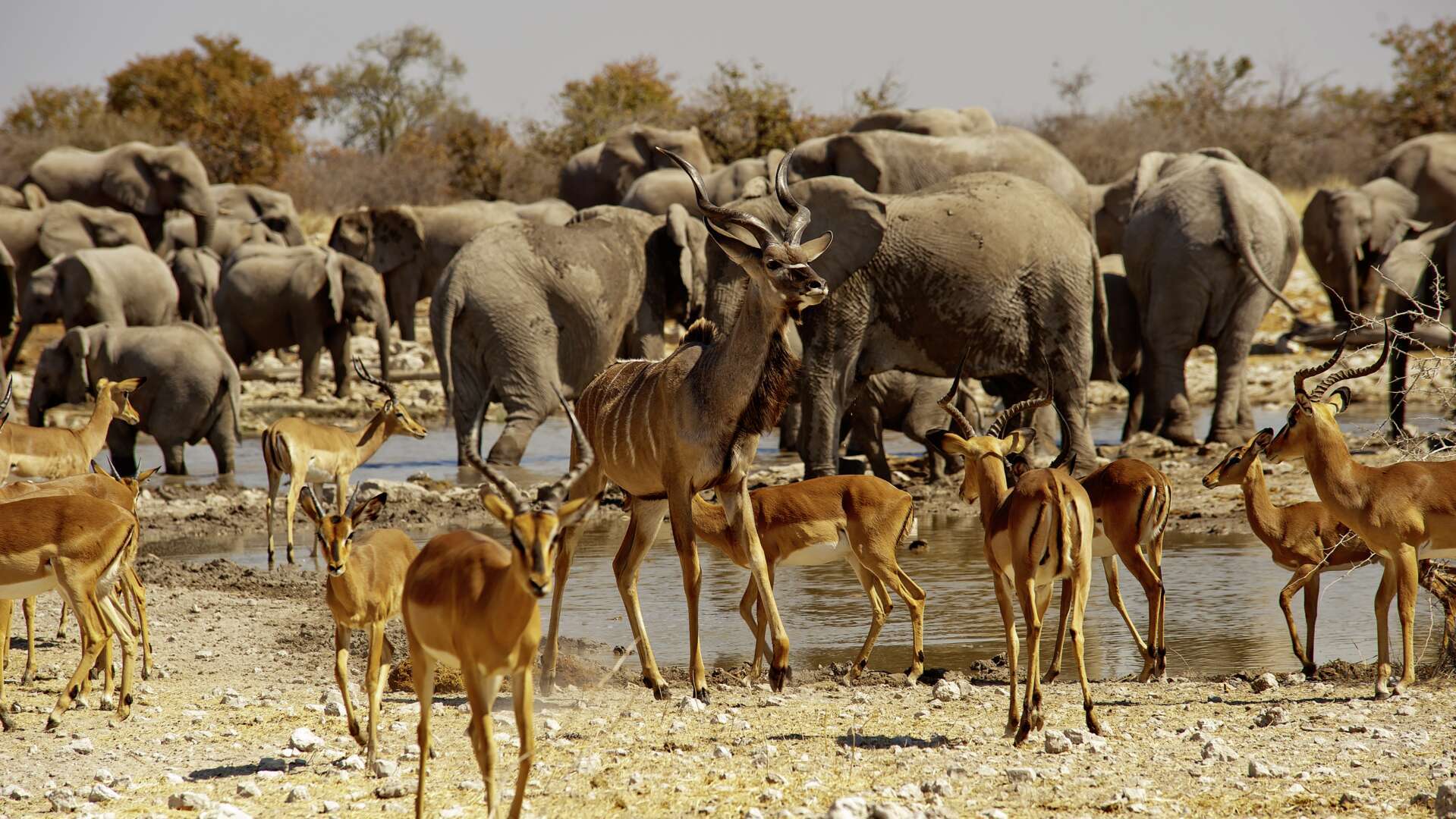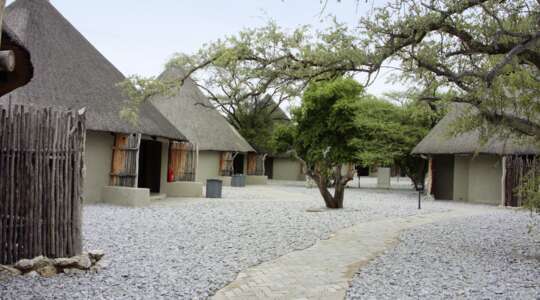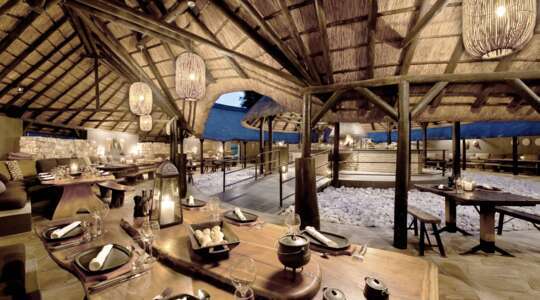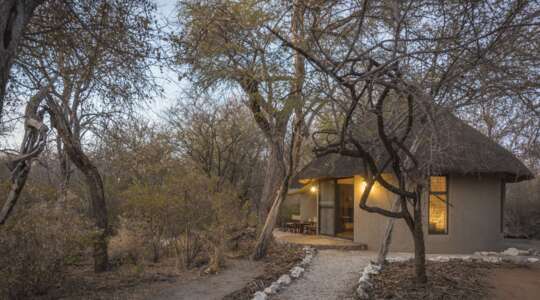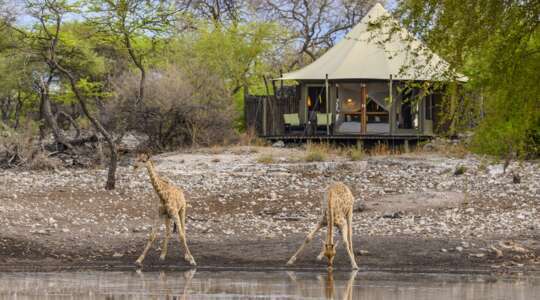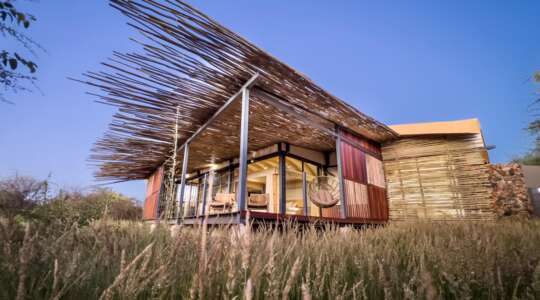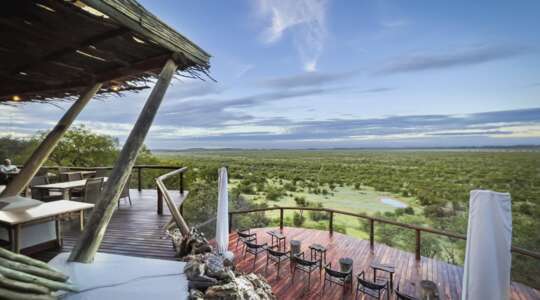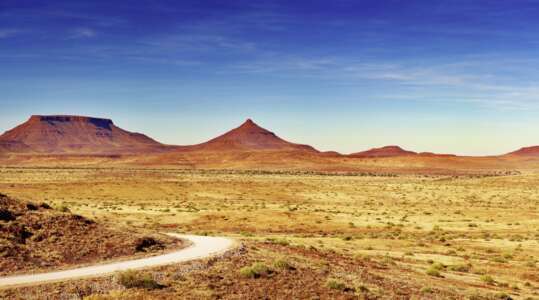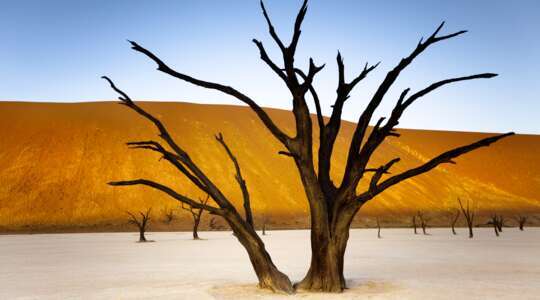Speak to one of our experts now about this offer
Call us on - 0800 092 4444
Or drop into your local Kuoni store to find out more
Speak to one of our experts now about this offer
Call us on - 0800 294 9710
Or drop into your local Kuoni store to find out more
Speak to one of our experts now about this offer
Call us on - 0800 294 9728
Or drop into your local Kuoni store to find out more
See wildlife drawn to perennial springs in the Etosha pan
One of the oldest conservation sites in Africa, Etosha sustains a huge variety of mammals and birdlife including the endangered black rhino and rare gemsbok. Dominated by the extensive Etosha salt pan, predators and plains game here are attracted to the waterholes, creating particularly prolific wildlife viewing during the dry season (June to November).
Etosha Hotels
Our recommendations for the best places to stay in Etosha
Holidays in Etosha
You may also like
Explore Etosha, the jewel in Namibia’s safari crown
If you’re craving a safari, there’s no better place in Namibia than Etosha National Park. The country’s oldest conservation area is home to 114 species of mammals and 350 bird species. What’s really special about Etosha though is its spring-fed waterholes, which draw animals from far and wide, especially during the dry season from June to November.
Etosha is good for a self-drive adventure, guided tour or the individual lodges also offer full and half-day safaris with their guides, who’ll know all the best waterholes and wildlife-watching destinations in the park. Perhaps take a break from behind the wheel or your guided tour vehicle and enjoy a ride in an open-sided 4×4, perfect for photographing animals and Etosha’s vast landscapes. Your guide will help you spot everything from giraffes and elephants to big cats and rhinos, as well as plains game like zebra, oryx and the rare black-faced impala.
There’s more to Etosha than just its diverse wildlife; the baobab-studded plains are covered with over 20 types of vegetation. Then there’s the Etosha salt pan, which is Africa’s largest and visible from space. In fact, the local Ovambo people refer to Etosha as the Great White Place after this geological marvel – traversing the pan is like travelling across the surface of the moon, with clouds of white dust flying up in your wake. While the dry season might be best for waterhole sightings, during the wet season the pans flood, creating mirrored lagoons that attract migratory birds, including flocks of flamingos – it’s quite a picture.\
Sorry, your hotel is no longer available
Please check alternatives
-
{{item.body}}
-
{{item.body}}
Choose a departure date
{{store.searchDuration}} nights
Enter rooms & guests
Checking prices & availability

{{term}}, {{formattedDate}} for {{searchDuration}} nights
Destinations See all Destinations
HolidaysSee all Holidays
OffersSee all Offers
InspirationSee all inspiration
